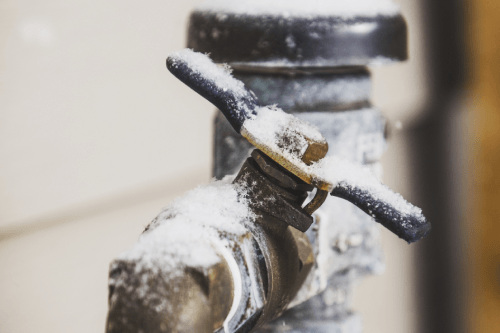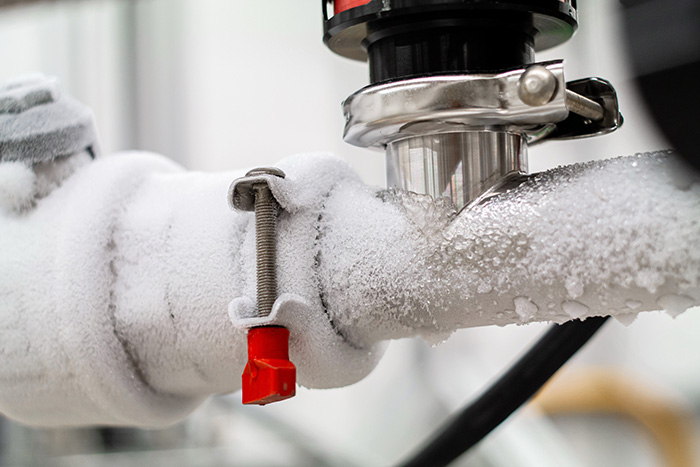Protecting Pipes from Freezing Damage: Essential Strategies
Protecting Pipes from Freezing Damage: Essential Strategies
Blog Article
We have encountered the article on How to Prevent Your Pipes From Freezing below on the internet and figured it made good sense to share it with you on this site.

Cold weather can damage your plumbing, especially by freezing pipes. Right here's how to avoid it from happening and what to do if it does.
Intro
As temperature levels decrease, the risk of frozen pipes rises, possibly causing expensive repair work and water damage. Comprehending exactly how to prevent icy pipelines is vital for home owners in chilly climates.
Avoidance Tips
Insulating at risk pipes
Cover pipes in insulation sleeves or make use of heat tape to secure them from freezing temperatures. Concentrate on pipes in unheated or outside locations of the home.
Heating methods
Maintain indoor spaces appropriately heated, particularly areas with pipes. Open up cabinet doors to allow warm air to distribute around pipelines under sinks.
Just how to identify frozen pipes
Try to find reduced water circulation from taps, uncommon smells or sounds from pipes, and visible frost on subjected pipes.
Long-Term Solutions
Structural adjustments
Take into consideration rerouting pipelines away from exterior walls or unheated areas. Include extra insulation to attic rooms, cellars, and crawl spaces.
Upgrading insulation
Buy top notch insulation for pipes, attic rooms, and wall surfaces. Proper insulation aids maintain regular temperatures and lowers the danger of icy pipes.
Securing Outdoor Plumbing
Yard tubes and outdoor taps
Detach and drain pipes yard pipes prior to winter months. Install frost-proof spigots or cover outdoor faucets with insulated caps.
Understanding Icy Pipelines
What creates pipelines to freeze?
Pipes freeze when subjected to temperature levels listed below 32 ° F (0 ° C) for extended periods. As water inside the pipes ices up, it broadens, putting pressure on the pipe wall surfaces and possibly causing them to rupture.
Threats and damages
Frozen pipes can cause water supply interruptions, residential or commercial property damages, and costly repair services. Burst pipes can flooding homes and create substantial architectural damages.
Signs of Frozen Pipes
Recognizing frozen pipes early can stop them from rupturing.
What to Do If Your Pipes Freeze
Immediate activities to take
If you think icy pipelines, keep taps available to alleviate stress as the ice melts. Use a hairdryer or towels taken in warm water to thaw pipes gradually.
Final thought
Preventing icy pipes calls for proactive actions and quick actions. By understanding the reasons, indicators, and preventive measures, home owners can safeguard their pipes during cold weather.
6 Proven Ways to Prevent Frozen Pipes and Protect Your Home
Disconnect and Drain Garden Hoses
Before winter arrives, start by disconnecting your garden hoses and draining any remaining water. Close the shut-off valves that supply outdoor hose bibs and leave the outdoor faucet open to allow any residual water to drain. For extra protection, consider using faucet covers throughout the colder months. It’s also important to drain water from any sprinkler supply lines following the manufacturer’s directions.
Insulate Exposed Pipes
Insulating your pipes is an effective way to prevent freezing. Pipe insulation is readily available at home improvement stores and is relatively inexpensive. Pay close attention to pipes in unheated areas such as the attic, basement, crawl spaces, or garage. Apply foam insulation generously to create a buffer against the cold. You can also wrap your pipes in heat tape or thermostat-controlled heat cables for added warmth.
Seal Air Leaks
Inspect your home for any cracks or openings that could let in cold air. Seal any holes around the piping in interior or exterior walls, as well as the sill plates where your home rests on its foundation. Additionally, make sure to keep your garage door closed unless you’re entering or exiting. Leaving it open creates a significant air leak that can lead to frozen pipes.
Allow Warm Air Circulation
During cold snaps, it’s essential to allow warm air to circulate evenly throughout your home. Leave interior doors ajar to promote better airflow. Open kitchen and bathroom cabinets to help distribute heat consistently around the rooms. If you have small children or pets, be sure to remove any household chemicals or potentially harmful cleaners from open cabinets for safety.
Let Faucets Drip
A small trickle of water can make a big difference in preventing ice formation inside your pipes. When temperatures drop significantly, start a drip of water from all faucets served by exposed pipes. This continuous flow helps prevent the water from freezing. Additionally, running a few faucets slightly can relieve pressure inside the pipes, reducing the chances of a rupture if the water inside does freeze.
https://choateshvac.com/6-proven-ways-to-prevent-frozen-pipes-and-protect-your-home/

Do you appreciate reading up on Prevent Frozen Pipes ? Create a short review further down. We would be delighted to hear your feelings about this page. Hoping that you come back again in the future. You should take the time to share this blog post if you enjoyed reading it. Thanks for going through it.
Call Today Report this page